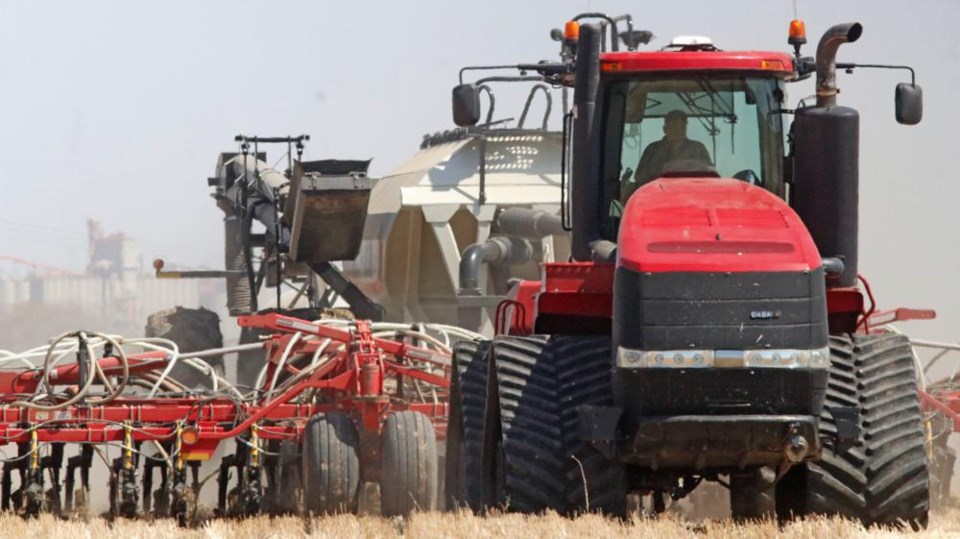WEYBURN - Producers in certain parts of the southeast experienced rain delays, but the region overall made steady seeding progress, according to the Saskatchewan Crop Report for the period of May 13 to 19. Seeding in the southeast is currently 63 per cent complete, which is slightly higher than the five-year average of 58 per cent.
Pulse crops have the highest percentage of acres seeded. Currently, 89 per cent of field peas, 87 per cent of lentils, and 81 per cent of chickpeas have been planted. Most spring cereal crops are also well over half seeded. Durum leads the way with 80 per cent acres planted, followed by spring wheat at 67 per cent, oats at 62 per cent, barley at 60 per cent, and canary seed at 57 per cent. Triticale is significantly lower with 21 per cent currently planted. Seeding of oilseed crops is approximately half done with 51 per cent of mustard, 47 per cent of flax, and 42 per cent of canola in the ground. Forty-five per cent of soybean crops have been planted. Finally, seeding of perennial forage crops is 21 per cent complete.
Most of the southeast received large amounts of precipitation this past week. The most rainfall recorded was 139 mm in the Lampman area, followed by the Oxbow area with 104 mm, and Frobisher area with 100 mm. The areas around Carnduff and Wapella also received significant rainfall with 93 mm and 87 mm, respectively.
Topsoil moisture levels are significantly higher in the southeast than the rest of the province due to the heavy rainfall. Cropland topsoil moisture is rated at 27 per cent surplus, 70 per cent adequate, and three per cent short. Hayland areas are rated as 13 per cent surplus, 79 per cent adequate, seven per cent short, and one per cent very short. Finally, topsoil moisture in pastures is rated as 14 per cent surplus, 77 per cent adequate, eight per cent short, and one per cent very short.
Most producers in the southeast are satisfied with moisture conditions and are eager to resume seeding after rain delays.




